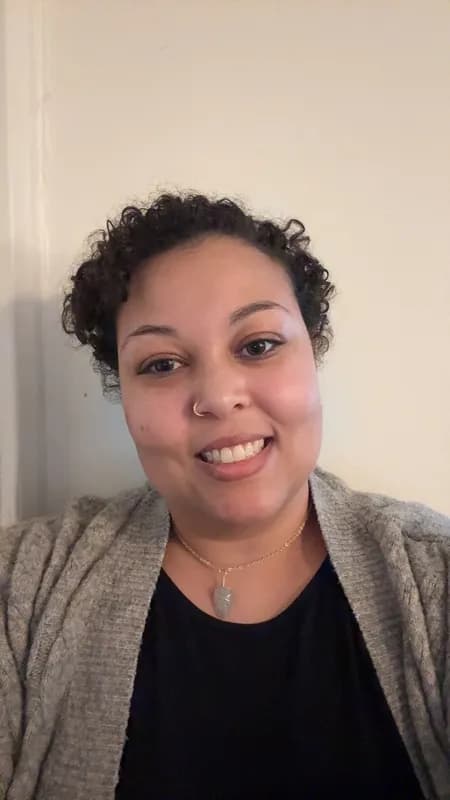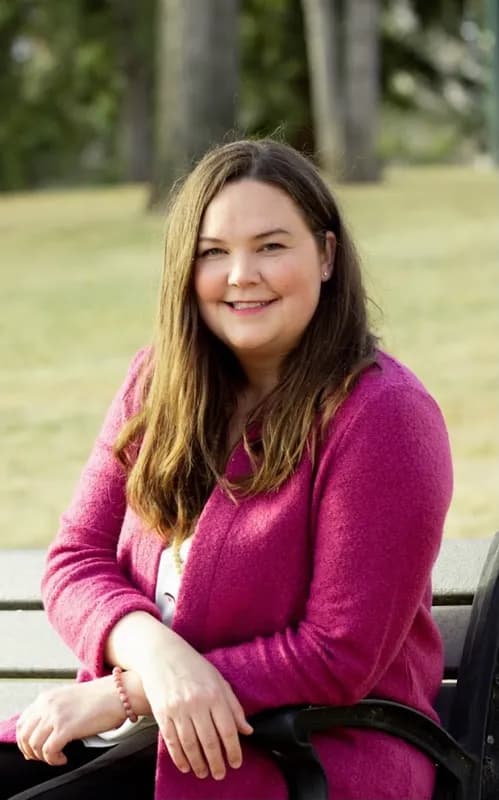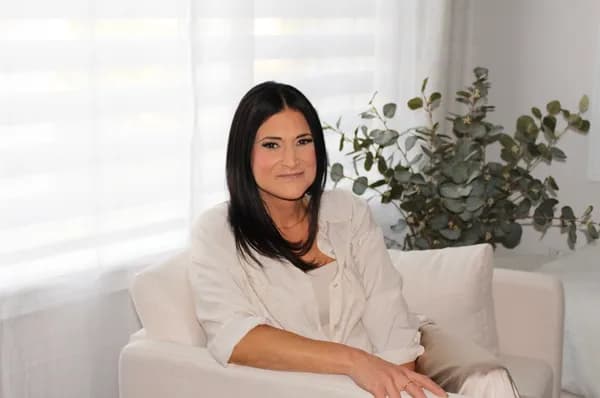Therapy for family conflict

Family gatherings can start to feel like minefields instead of comfort. Maybe siblings have stopped speaking, arguments repeat every time you meet, or your teenager has withdrawn completely. You might feel trapped between your partner and your parents or exhausted from managing everyone’s emotions. When the people who should feel like home become a source of stress and hurt, it affects your whole life. These patterns rarely shift on their own, but families can heal. Therapy helps each person feel heard, reduces conflict, and creates room for healthier connection to grow.
Understanding family conflict and therapy
What counts as family conflict
Family conflict means patterns that keep causing harm rather than normal disagreements. It includes repeated arguments that never resolve, avoidance between family members, tension at every gathering, or teens and siblings who shut down completely. Addiction, mental health challenges, divorce, or blended family changes can also strain relationships. These patterns rarely improve without help.
How family therapy works differently
Family therapy looks at how the whole system maintains patterns rather than blaming one person. A withdrawal–pursuit cycle is a common example, where one person pulls away and another pushes harder. Therapy helps everyone see their role in these cycles and learn new ways of responding that improve connection across the family.
The evidence for family therapy
Research shows family therapy is highly effective, with success rates around sixty to eighty percent. Most families notice meaningful changes within eight to twenty sessions. It works especially well for adolescent challenges, substance use, eating disorders, and the family impact of mental illness. Progress is strongest when everyone participates consistently.
Family conflict and mental health in Canada
Family conflict significantly impacts mental health across the lifespan. Research shows family therapy is highly effective when families engage consistently.Mental Health Commission of Canada and Family therapy effectiveness research.
The ripple effects of family conflict
Impact on children and adolescents
Children sense conflict even when adults think they do not. Younger kids may show anxiety, behavioural issues, sleep problems, or regressions. Teens often withdraw or act out through risky behaviours, depression, or anxiety. School performance can drop. Research links ongoing family conflict to higher rates of mental health challenges, substance use, and self harm that can carry into adulthood.
Adult relationships and sibling dynamics
Conflict often continues into adulthood. Siblings may hold long standing resentment or compete for approval. Caring for aging parents can revive old wounds. Some adults reduce or cut off contact, while others stay connected out of obligation. These unresolved tensions can strain romantic relationships and create ongoing stress.
Mental and physical health consequences
Long term conflict creates real health effects. Anxiety, depression, sleep problems, and stress related physical symptoms are common. Some people develop trauma responses or weakened immune function. Many feel exhausted after family interactions and need time to recover. This reflects the genuine physiological impact of chronic relational stress.
Social isolation and shame
Conflict often leads to shame and withdrawal. You may hide family struggles, fearing judgment or feeling alone in your experience. Friends may not understand why issues persist, which increases isolation. Pretending everything is fine becomes exhausting. Reaching out for support helps break this isolation and begins the healing process.
How family therapy resolves conflict
Creating a neutral space for difficult conversations
Family therapy offers a safe, structured space with a neutral professional who helps everyone feel heard and uncovers patterns the family cannot see from inside the conflict. The therapist interrupts harmful dynamics, guides healthier communication, and supports clearer expression of needs. The goal is not forcing agreement but creating more functional, respectful interactions. Even small shifts in how people relate can lead to meaningful long term change.
Therapeutic approaches for family conflict
Structural family therapy
This approach looks at family organization: power balance, boundaries, and relationships that are too close or too distant. It helps families strengthen healthy boundaries, improve parental teamwork, and correct imbalances. The therapist actively guides interactions in session so families experience new, more functional patterns in real time.
Emotionally focused family therapy
This approach helps families understand the attachment needs behind conflict. Anger, withdrawal, or criticism are often protective responses to feeling disconnected or afraid. By creating safe emotional conversations, families share vulnerable feelings and rebuild secure bonds, often resolving issues that problem solving alone cannot.
Narrative family therapy
Families often get stuck in rigid stories about themselves and each other. Narrative therapy helps them challenge limiting narratives, highlight exceptions, and see overlooked strengths. When these stories shift, new possibilities for interaction and understanding open up, reducing problem saturated patterns.
Solution focused family therapy
This approach spotlights what already works rather than what is wrong. Families identify times when things go better and build on those strengths through small, achievable steps. It is especially useful when families feel overwhelmed and need quick, practical changes that create positive momentum.
Strategic family therapy
Strategic therapy is action oriented, using targeted tasks to interrupt unhelpful patterns. The therapist offers clear steps, such as consistent consequences or structured routines, to shift dynamics quickly. It is often brief and ideal for families wanting focused, practical solutions to specific issues.
The family therapy journey
Getting started and building safety
Early sessions focus on getting everyone in the room and creating safety. Some family members may resist, so frame therapy as a space where each person is heard rather than a place to fix someone. Your therapist sets clear ground rules, listens to each perspective, and maps the patterns driving conflict. Even if not everyone attends at first, you can still begin. This phase builds trust and lays the foundation for change.
Active work and practicing new patterns
The middle phase focuses on practicing new ways of interacting. Your therapist helps guide difficult conversations, interrupts unhelpful patterns, and coaches healthier communication in real time. Families learn skills like expressing needs clearly, staying regulated during conflict, and solving problems collaboratively. Homework may include family meetings or intentional one on one time. Progress is uneven, but repeated practice slowly strengthens new patterns.
Consolidating change and moving forward
As new habits take hold, conflict becomes less intense and conversations feel safer. You still disagree, but in ways that do not damage the relationship. Most families work with a therapist for 8 to 20 sessions, though complex situations may take more. By the end, you have a shared understanding of your patterns and tools for managing future challenges. Many families schedule occasional check ins during stressful times to maintain progress.
Find a therapist for family conflict
Choosing the right therapist matters. Each province in Canada has its own regulations, which is why working with a recognized professional can make a real difference in your care. Stellocare takes the uncertainty out of the process by listing only verified therapists you can trust.
The right therapist for you
No therapists found with these specialties in Ontario.
Try selecting a different province.Resources and support
Canadian family therapy resources
CAMH Family Resource Centre
Located at the Centre for Addiction and Mental Health in Toronto, the Family Resource Centre offers support, education, and navigation services for families dealing with mental health and addiction challenges. Free workshops, support groups, and access to mental health information. Phone: 416-535-8501 ext. 32028.Visit CAMH Family Resources.
Canadian Association for Couple and Family Therapy
National professional organization for Marriage and Family Therapists. Their website includes a therapist directory to find Registered Marriage and Family Therapists (RMFT) across Canada. The Emergency Response Team offers three free couple or family therapy sessions to those in crisis.Find a therapist.
Family Service Toronto
Provides individual, couple, and family counselling for adults and families dealing with relationship problems, parenting challenges, trauma, life transitions, and mental health concerns. Services available on a sliding scale based on income. Phone: 416-595-9618.Visit website.
CMHA Family Outreach and Response
The Canadian Mental Health Association offers recovery oriented support services for families and friends of individuals experiencing mental health issues. Includes education, practical skills training, and support groups. Available through CMHA branches across Ontario.Access services.
Vanier Institute of the Family
National organization dedicated to understanding and supporting families in Canada. Provides research, publications, and resources on family wellbeing, family diversity, and evidence based approaches to strengthening families. Phone: 613-228-8500.Visit website.
Building healthier family patterns
Communication essentials
- Use "I" statements: Express feelings and needs without attacking character. Say "I feel hurt when plans change without telling me" instead of "You never consider anyone else." This makes it easier for family members to hear concerns without getting defensive.
- Listen for underlying feelings: An angry outburst might mask hurt or fear. Before responding, try reflecting what you hear: "It sounds like you're feeling unimportant when we make decisions without you." This validation often de-escalates conflicts more effectively than defending or explaining.
- Take effective timeouts: When conflicts escalate, continuing rarely helps. Establish a family rule that anyone can call a timeout without consequences. Take 20 to 30 minutes to calm down separately, then reconvene to continue the conversation more calmly.
Boundaries and roles
- Establish clear boundaries: Healthy families have clear but flexible boundaries. This might include privacy rules, financial boundaries about who supports whom, emotional boundaries about not sharing all marriage problems with children, and communication boundaries like not using children as messengers between conflicting adults.
- Avoid triangulation: This happens when two people in conflict involve a third person instead of addressing issues directly. If someone tries to triangle you, redirect them: "That sounds like something you should discuss directly with them." Address conflicts with the actual person involved.
- Break free from rigid roles: Families often assign roles that become limiting. Notice when you're responding to someone's role rather than their actual behaviour. Allow family members to be complex. The "responsible" child can make mistakes. The "problem" child can make good choices. Update your perceptions as people change.
Repair and reconciliation
- Practice genuine repair: Healthy families fight, but they also repair. This means acknowledging your part in conflicts, making genuine apologies without "but" (adding "but" negates the apology), and accepting apologies graciously rather than continuing to punish. Model repair for children so they learn relationships can survive conflict.
- Focus on patterns, not incidents: Instead of rehashing specific arguments, identify patterns that keep happening. Do conflicts escalate the same way each time? Does someone always withdraw while another pursues? Understanding patterns helps you interrupt them before they spiral.
- Build positive moments: Families in conflict often forget to have positive interactions. Intentionally create enjoyable shared experiences, even small ones like family meals or walks. Positive moments build goodwill that helps families weather disagreements more gracefully.
Questions about family therapy
What if not everyone will come to therapy?
You can start with whoever is willing. Change in part of the system often influences the rest, and reluctant members sometimes join once they see progress. Your therapist can also help you engage resistant family members and improve patterns even without full participation.
Will the therapist take sides or blame someone?
Skilled family therapists focus on patterns, not blame. They help each person understand their role in the dynamic and avoid singling anyone out. If you ever feel targeted or scapegoated, bring it up or consider a different therapist.
What age should children be to participate?
Children as young as four or five can join with play based methods, while adolescents participate more directly. For very young children, therapists may mainly work with parents. Teens are usually included because their perspective is essential to understanding family dynamics.
How long does family therapy take?
Many families improve within 8 to 20 sessions, with small shifts often appearing in the first month. More complex issues take longer. Success means healthier patterns and better communication, not the absence of conflict. Some families return for tune ups during stressful times.
What about confidentiality in family therapy?
Therapists outline confidentiality rules at the start. What’s shared in joint sessions is not kept from others in the room, but it isn’t shared outside the family without consent. Individual sessions may have different limits, and your therapist will explain their specific policy clearly.
Can family therapy help if abuse is involved?
Current abuse requires safety first, so family therapy is usually not appropriate until risk is addressed. Therapy can support families working through past abuse, but your therapist will assess safety carefully and may recommend individual work before bringing everyone together.
Related concerns
References
- Carr, A., et al. (2024). Family therapy and systemic interventions for child-focussed problems: The evidence base. Journal of Family Therapy. Retrieved from https://onlinelibrary.wiley.com/doi/10.1111/1467-6427.12476
- Mental Health Commission of Canada. (2021). Children and Youth. Retrieved from https://mentalhealthcommission.ca/what-we-do/children-and-youth/
- Centre for Addiction and Mental Health. (2024). Family Therapy. Retrieved from https://www.camh.ca/en/health-info/mental-illness-and-addiction-index/family-therapy
- Statistics Canada. (2021). Family violence against children and youth in Canada. Retrieved from https://www150.statcan.gc.ca/n1/pub/85-002-x/2021001/article/00001/02-eng.htm
- Repetti, R. L., Taylor, S. E., & Seeman, T. E. (2002). Risky families: Family social environments and the mental and physical health of offspring. Psychological Bulletin, 128(2), 330-366. Retrieved from https://pubmed.ncbi.nlm.nih.gov/11931522/
- Canadian Association for Couple and Family Therapy. (2024). Home. Retrieved from https://camft.ca/
- Vanier Institute of the Family. (2024). Home. Retrieved from https://vanierinstitute.ca/
- Family Service Toronto. (2021). Counselling. Retrieved from https://familyservicetoronto.org/our-services/programs-and-services/counselling/
- Canadian Mental Health Association Ontario. (2024). Family and Caregiver Support. Retrieved from https://ontario.cmha.ca/documents/family-and-caregiver-support/
About Stellocare
Stellocare is a Canadian platform where you can find the best fit therapist for you. Search the right thperaists now by asking our AI, browsing our list, or finding our social workers for personal referral.

Emily Rusyn
Travailleur/Travailleuse Social(e) (QC)

Katherine Collins
Registered Psychotherapist (Qualifying) (ON)

Arin Clarke
Canadian Certified Counsellor

Victoria Jacobs
Registered Psychotherapist (ON)

Melodi Laframboise
Registered Psychotherapist (ON)

Chelsea Almeida
Counselling Therapist (PE)

Michaela Leedahl
Registered Social Worker (SK)

Maya Dousti
Registered Psychotherapist (ON)

Alexia Carbone
Registered Psychotherapist (Qualifying) (ON)

Dalia Mohammed
Registered Psychotherapist (ON)

Karen Liivoja
Registered Psychotherapist (Qualifying) (ON)

Marissa Perreault
Registered Psychotherapist (Qualifying) (ON)

Liz Hagerty
Registered Social Worker (BC)

Vanessa Fingland
Counselling Therapist (AB)

Jessica DeMille
Registered Psychotherapist (Qualifying) (ON)

Jessica Maronski
Registered Psychotherapist (ON)

Shannon Gallagher
Canadian Certified Counsellor

Renée LaJoie
Counselling Therapist (AB)

Florence Wong
Registered Social Worker (BC)

Emily Rusyn
Travailleur/Travailleuse Social(e) (QC)

Katherine Collins
Registered Psychotherapist (Qualifying) (ON)

Arin Clarke
Canadian Certified Counsellor

Victoria Jacobs
Registered Psychotherapist (ON)

Melodi Laframboise
Registered Psychotherapist (ON)

Chelsea Almeida
Counselling Therapist (PE)

Michaela Leedahl
Registered Social Worker (SK)

Maya Dousti
Registered Psychotherapist (ON)

Alexia Carbone
Registered Psychotherapist (Qualifying) (ON)

Dalia Mohammed
Registered Psychotherapist (ON)

Karen Liivoja
Registered Psychotherapist (Qualifying) (ON)

Marissa Perreault
Registered Psychotherapist (Qualifying) (ON)

Liz Hagerty
Registered Social Worker (BC)

Vanessa Fingland
Counselling Therapist (AB)

Jessica DeMille
Registered Psychotherapist (Qualifying) (ON)

Jessica Maronski
Registered Psychotherapist (ON)

Shannon Gallagher
Canadian Certified Counsellor

Renée LaJoie
Counselling Therapist (AB)

Florence Wong
Registered Social Worker (BC)

